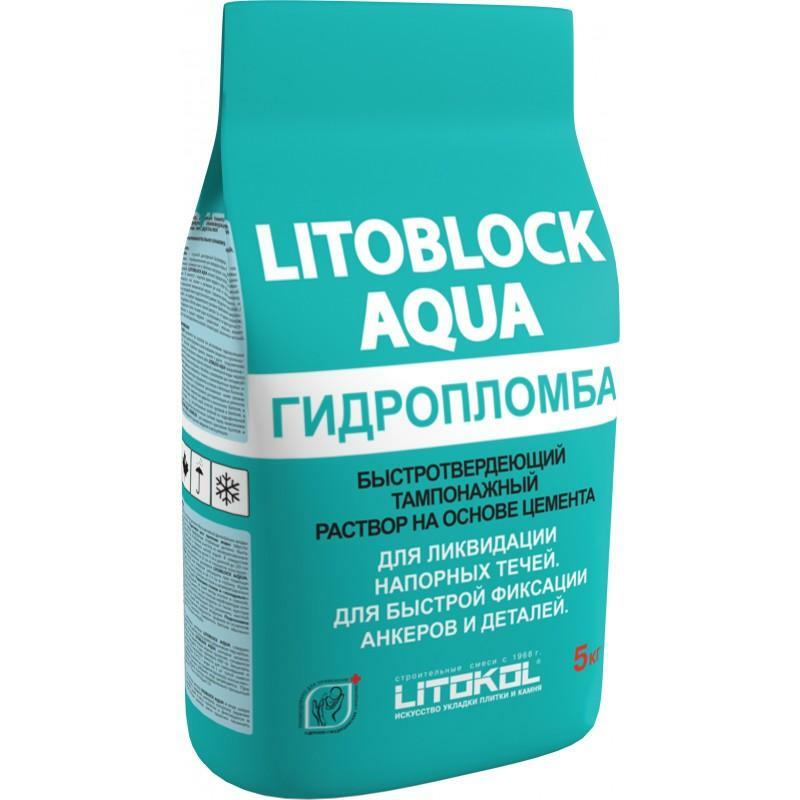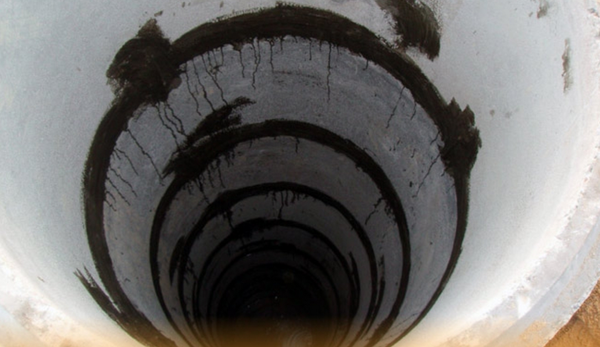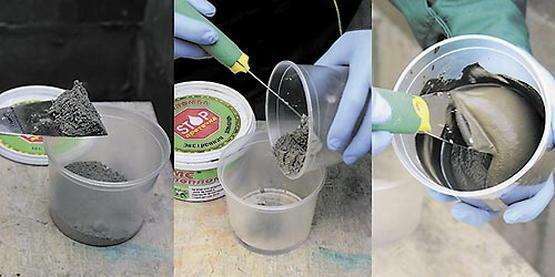 Hydraulic fill for leaks in concrete is used in wells with drinking water and cesspools made of RC rings Manufacturers offer a huge selection of prefabricated seals based on waterproofing polymeric materials, but many builders prefer to use homemade hydroplomb for sealing seams and leaks inWells and other structures( pool, artificial pond, cesspool).
Hydraulic fill for leaks in concrete is used in wells with drinking water and cesspools made of RC rings Manufacturers offer a huge selection of prefabricated seals based on waterproofing polymeric materials, but many builders prefer to use homemade hydroplomb for sealing seams and leaks inWells and other structures( pool, artificial pond, cesspool).
-
- How to seal the seams in the well: types of hydraulic flushing
- Than to seal seams in the well between the rings
- Ready hydraulic well for the wells: how to use it
- Sealing the seams in the well with your own hands
- Overview of the hydraulic seam forFixing of leaks in concrete( video)
Than to seal the seams in the well: types of hydraulic flushing
Hydraulic flushing is a special compound used to eliminate leaks in wells. It is prone to rapid hardening and is not washed out by the pressure of water. If the cleft in the well is not eliminated in a timely manner, the groundwater can get into the well water and change its taste and quality.
Earlier wooden caps were used, which were inserted into the crevice. However, the chips got wet and started to rot, and the water got an unpleasant smell.
An ordinary mortar of cement and sand was washed out with water, therefore a hydroplane developed especially for such purposes appeared over time.
 Hydraulic fractures are pressure and non-pressure
Hydraulic fractures are pressure and non-pressure
Types of hydraulic seals: Hydro cement is also used to repair pipelines and small gusts in basements. Requirements for waterproofing seals: It is also important that the seal is not corroded or deformed in the event of temperature changes. Hydroplomb should not change the taste of water and do not affect its composition. For seaming, do not use a mounting foam or epoxy resin. Also, care should be taken with various sealants. Such materials for embedding may not bring the desired effect, and also spoil the drinking water. To seal joints between rings, a conventional cement with sand can be used. This will be the cheapest way, but not the most durable. Under the influence of moisture and cold, such seams are destroyed very quickly. For additional strength, a liquid glass can be added to the solution. It should be taken into account that with the addition of liquid glass, the solution quickly solidifies. Therefore, before mixing the hydroplomb, prepare the front of the work and mix the solution in small batches. If water seeps from the seams, the cement slurry does not fit perfectly. Such a mixture just does not have time to freeze and will be washed by the pressure of water. In this case, you need a hydraulic splint. This is a specially developed solution that is not afraid of temperature changes, completely does not flow through the water and expands when it dries. If the seams after cleaning from dirt, debris and broken concrete are too deep and wide, they are jammed with a jute, hemp or linen rope impregnated with a special compound suitable for waterproofing. To caulk or in other words to clog the rope in a slot is most conveniently a wooden spatula and a hammer. Then the remaining space is sealed with hydroplomb. Sealing of dry joints is carried out with cement mortar. This approach will save and reliably cover up cracks and seams. The solution for leakage can be prepared from a dry mix, strictly adhering to the instructions. As a rule, 1 kg of dry mix requires 150 ml of water 18-20 degrees. If necessary, you can mix small amounts of waterproofing composition, based on the proportion of 1 part water - 5 parts dry cement. Large leakage should be sealed with a thicker solution, so the amount of dry matter can be increased to 7 parts. The solution is mixed for half a minute, then immediately applied to the site with a leak. Which waterproofing mixtures are better: During the preparation of the solution, as well as the subsequent work with it, you should follow certain rules. Always wear a respirator and protective gloves when working. To mix the solution, do not use any liquids - just plain water, and the container should be metal. Removing leaks in the wells can be done without the involvement of masters, any master can close the leak with his own hands. To eliminate the leak in the well, first of all, you do not have to hurry and observe the technology of works. Procedure:
Than to seal seams in the well between the rings
 To seal joints between rings, you can use ordinary cement with sand
To seal joints between rings, you can use ordinary cement with sand Ready Hydraulic Fill for Wells: How to use it
 The hydraulic slurry solution is mixed for half a minute and then immediately applied to the leakage area
The hydraulic slurry solution is mixed for half a minute and then immediately applied to the leakage area
Sealing the seams in the well with your own hands
 Sealing of seams in the well can be done by our own hands
Sealing of seams in the well can be done by our own hands
After finishing all work, it is recommended to immediately wash the whole tool, otherwise the solution will solidify and clean it will be problematic.
When working with a perforator or jackhammer, you must strictly follow the rules of the tool!
It is better to use ready-made hydroplugs, the homemade composition does not give a full guarantee of quality.
Overview Hydraulic Fill for Leakage in Concrete( video)
Pressure or non-pressure leakage in a well or elsewhere is easily eliminated with a hydraulic splint. Possessing resistance to frost, corrosion and deformation, the waterproofing compound quickly solidifies on concrete walls, blocking the access of groundwater to clean well water.


